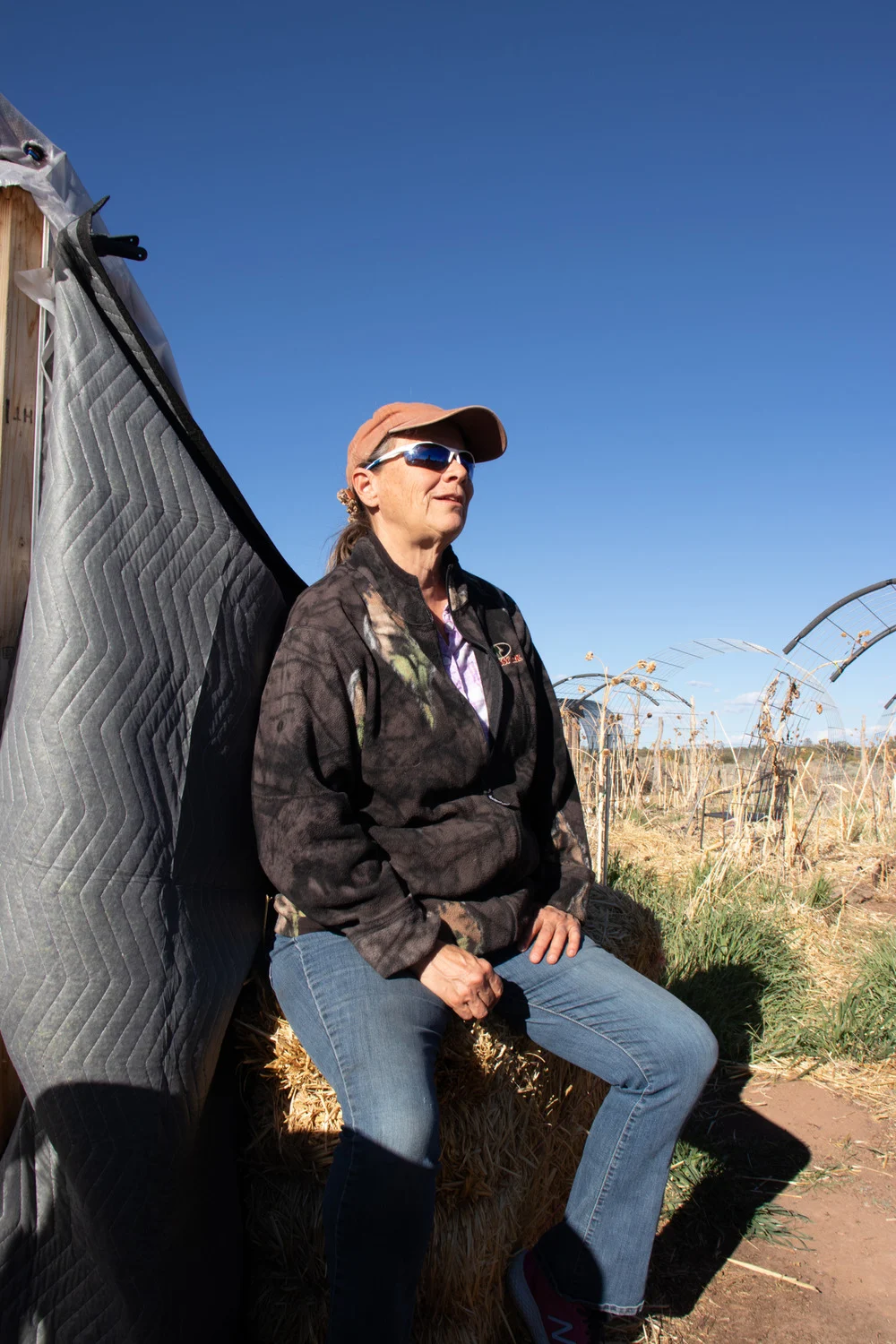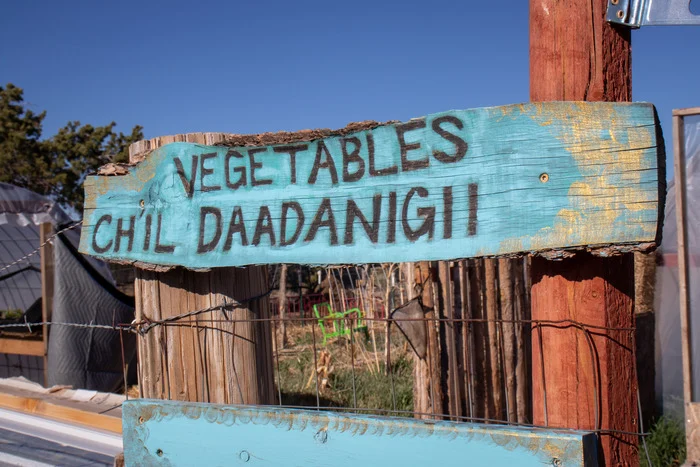
A half-hour drive south of Gallup, New Mexico, the elevation rises and the sprawling desert turns to a hilly, mint green landscape covered in piñon trees and fields of wild sage – staple plants in Navajo traditional medicine and spirituality. Unlike many Native American tribes forced to resettle permanently in different parts of the country, the reservation today lies on the tribe’s historical homeland, encompassing parts of Arizona, New Mexico, and Utah.
Over centuries, the Navajo people developed a time-tested system for thriving physically and spiritually on this land. In that area today, near the community of Vanderwagen, lies Spirit Farm, a “regenerative farm” founded in 2014 with a goal to “recover and reclaim traditional farming and spiritual practices, along with modern practices, to establish resiliency in our way of life”.
Among the farm’s aims is to inspire Indigenous people to grow their own food, a potential solution to persistent health disparities rooted in historical racial injustice.
Indigenous people in the United States have a life expectancy seven years lower than white people, and disproportionately high rates of obesity, diabetes and heart disease. Research suggests Indigenous people were 3.3 times more likely to have died from Covid-19 than white and Asian people in the United States in the first year of the pandemic.
The Navajo Nation – now the largest tribe in the United States – had a Covid-19 death rate higher than any state in the country.
A key factor affecting the disparities, many of which are diet-related, is access to healthy food. Indigenous people in the United States are twice as likely as white people to suffer from food insecurity, which can result from economic hardship as well as geography. One study found that only a quarter of people residing on tribal lands live within a mile of a grocery store, compared to almost 60% of the overall US population.
The Navajo Nation – comparable in size to West Virginia – has no more than 15 grocery stores. Many people have to drive hours to reach one.
Spirit Farm is one of many non-profits and advocacy groups combating food insecurity and health concerns by promoting locally grown produce – part of a larger project to rejuvenate and proliferate the ancient environmental knowledge that fuelled agricultural communities in North America for centuries. And now, mainstream American culture and government institutions are starting to recognise Indigenous knowledge as an asset in the face of mounting environmental challenges, reversing a long trend of suppressing it.
And this isn’t just happening in the United States. There’s a growing awareness globally of the major role industrial food production plays in the degradation of nature and climate change. Last year, the UN’s first-ever Food Systems Summit officially recognised the importance of Indigenous food systems and regenerative agriculture. But hundreds of groups from all over the world boycotted the event, many calling for a radical shift away from corporate, largescale, monocropping agriculture in favour of smaller-scale producers like Spirit Farm.
Supported by Indigenous peoples’ success in protecting nature, Native-led environmental justice movements are gaining momentum in many countries. Recent research has shown that Indigenous peoples make up just five per cent of the global population, yet they protect 25 per cent of the land and 80 per cent of the world’s biodiversity.
Spirit Farm’s philosophy of connecting with nature, decolonisation, and regeneration over extraction has helped create more fertile soil and an abundance of nutritious vegetables, eggs, and meat. It offers workshops to people interested in setting up backyard gardens; six farmers currently working and learning on the premises are involved in starting their own “regenerative farms”.
“That’s the thing that’s really drawing people here to this farm,” said James Skeet, a Navajo tribal member who runs Spirit Farm on the eastern edge of the reservation with his wife Joyce. “We’re not just talking about it, we’re actually applying it.”
On the same land that he works today, Skeet recalled how his grandfather had grown crops like corn, beans, and squash for several years before destroying the ground through a more “conventional, colonised way of farming”.
As Skeet sees it, this “conventional” farming is fixated on quantity over quality. Across the United States, between an estimated 30-40 per cent of food supply is wasted, and, globally, food production is responsible for more than a quarter of all greenhouse gas emissions. Methane-emitting livestock, long supply chains that move food products across continents or oceans, and fertilisers that leak nitrous oxide are key contributors.
For years, the Skeets have injected their plot of land with fertiliser from animals fed with fermented corn for optimal gut health. When Covid-19 came, their “closed-loop system” was barely affected at all; the breakdown of supply chains was also inconsequential for them, and they never wanted for food. The produce they grow goes to themselves or neighbours, and they hope the knowledge they’re cultivating will also spread.
Skeet said interest in the farm surged during the pandemic and their “website hits exploded”, something he sees as part of a larger trend towards recognition and value for Indigenous knowledge. While accepting that these communities are still marginalised, he thinks that “the pendulum is starting to swing back towards this Indigenous regenerative intelligence, where Native people are now being heard.”
The Skeets buy surplus popcorn from industrial farms and ferment it into a probiotic-rich food source for their animals. Costs are minimal, in keeping with a mission that aims to demonstrate health-conscious farming techniques can still be affordable.
Denisa Livingston, a Navajo tribal member, public health expert and organiser with Diné Community Advocacy Alliance (DCAA) – Diné, meaning “the people” in the Navajo language, is used by the community to refer to themselves – has also seen a change. Livingston has worked for years with several organisations to promote Indigenous food systems in her community and elsewhere. She approached the recent Covid-19 crisis with a simple mantra: “We should not just go through the pandemic, but grow through it.”
During the pandemic, Livingston said DCAA collaborated with other Indigenous food advocacy groups to distribute “thousands of packets of seeds” to people. In the months following, she noticed more Navajo people growing food for their families and community members, and during 2021’s harvest season there was a blooming of farmers markets and diverse locally grown foods available in the community: beans, melons, radishes, edible flowers, chillies, marigolds – “veggies that normally we would not see”.
Livingston’s work fights the health disparities on the Navajo Nation exposed by the pandemic. “Every Diné family is affected by food-related diseases,” she said. Nearly 15 per cent of Indigenous adults in the United States suffer from diabetes, double that of white people.
- The New Humanitarian report










